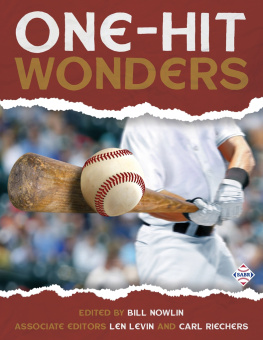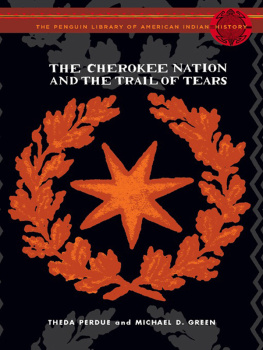
Also by JOHN A. SIMPSON
The Greatest Game Ever Played in Dixie: The Nashville Vols, Their 1908 Season, and the Championship Game (McFarland, 2007)
Hub Perdue
Clown Prince of the Mound
JOHN A. SIMPSON

McFarland & Company, Inc., Publishers
Jefferson, North Carolina, and London
LIBRARY OF CONGRESS CATALOGUING DATA ARE AVAILABLE
BRITISH LIBRARY CATALOGUING DATA ARE AVAILABLE
e-ISBN: 978-1-4766-0274-5
2014 John A. Simpson. All rights reserved
No part of this book may be reproduced or transmitted in any form or by any means, electronic or mechanical, including photocopying or recording, or by any information storage and retrieval system, without permission in writing from the publisher.
On the cover: Hub Perdue posing with a terrier puppy (Perdue family collection, Gallatin, Tennessee)
McFarland & Company, Inc., Publishers
Box 611, Jefferson, North Carolina 28640
www.mcfarlandpub.com
In memory of
Roland L. Larry DeLorme
(19332010)
My undergraduate advisor, mentor, friend and inspiration
Acknowledgments
The research material needed to write the biography of Hub Perdue involved extensive research trips to the South as well as long-distance exchanges with many local scholars and librarians throughout the country. I would like to take this opportunity to thank them.
The Society for American Baseball Research (SABR) is made up of dedicated men and women who volunteer their time and efforts to advance the study of baseball. Over the years, I have come into contact with many individuals who put their own research interests aside to run down items and scan microfilm for me. The Friends of Rickwood, a group of SABR members dedicated to the history of the Southern Association, has been invaluable to my own research. They include David Brewer, Skip Nipper and Clarence Watkins. I always look forward to our annual meeting in Birmingham. Steve Steinberg of Seattle has also been responsive to my queries about the Deadball Era, and his balanced thoughts are always welcome. And I have always valued the knowledge, copyediting skills and gentle critiques that Dan Ross, retired director of the University of Alabama Press, shared over the years. Finally, Rex Hamann of Andover, Minnesota, supplied valuable data on baseball in Minneapolis.
A host of librarians deserve special recognition too. The Tennessee State Library and Archive has been my summer home since 1984, and over the ensuing years I have met, and worked with, some outstanding people. Marylin B. Hughes, recently retired, has been indispensable in keeping me informed about happenings at the TSLA, and was ever-helpful in getting me connected with the right people whenever I had a specific research question. Of course, it never hurts to have a baseball enthusiast on staff, and Susan Gordon fit that role perfectly. I dont know what I would have done all of these years without the assistance of Karina McDaniel in Photographic Services. The photographs that appear in this volume from the TSLA are her work. Finally, I would like to thank Charles Sherrill, Tennessee State Librarian and Archivist. Chuck and I go back a long way, and I am indebted to him for approving the loan of several important reels of microfilm. Another librarian, Beth Odle of the Nashville Public Librarys Nashville Room was always ready with answers to my fine-printed questions about the citys history.
A number of librarians outside of Nashville were also helpful. Trying to obtain microfilm as an independent scholar has become quite a chore these days, and I would like to thank the following four individuals for making the experience less excruciating: Betty Malone, Inter-Library Loan Department, State Historical Society of Missouri, Columbia, Missouri; Dena Hutto, Director of Reference Library and Instruction, Reed College, Portland, Oregon; Katie Sloan, Inter-Library Loan Department, Knight Library, University of Oregon, Eugene, Oregon; and Leslie Christensen, Inter-Library Loan Department, Washington State Library, Olympia, Washington.
Occasionally, I needed materials from far-off places, and many librarians stepped up to the plate to offer assistance. These include Brian Spangle, Historical Collection Administrator, McGrady-Brockman House, Knox County Public Library, Vincennes, Indiana; and Sheila Bumgarner, Charlotte Public Library, Charlotte, NC. Independent researchers also provided coverage of smaller newspapers that were important to my biography of Perdue. These scholars include Adam Pratt, graduate student in the Department of History, LSU, Baton Rouge, Louisiana; and Amanda Rindler, Vincennes University Library, Vincennes, Indiana. One search by an unknown individual was conducted at the New York Public Library.
I would like to thank the following people for their support either during visits or through email requests: Richard King, Reference Librarian, Byron R. Lewis Historical Library, Vincennes University Library, Vincennes, Indiana; Jill Larson, Archivist, Byron R. Lewis Historical Library, Vincennes University Library, Vincennes, Indiana; Allen Haynes, Sumner County Historical Museum, Gallatin, Tennessee; the staff at the Sumner County Archives, Gallatin, Tennessee; and Gaines Foster, T. Harry Williams Professor of History and Dean of the College of Humanities and Social Sciences, LSU, Baton Rouge, Louisiana. Gaines and I first became acquainted as graduate students in 1982 over our mutual interest in the Lost Cause in Southern history, and he sent me in the right direction to find a local researcher on Louisiana baseball.
Photographic services were graciously supplied by the Library of Congress, the Chicago Museum of History, Tennessee State Library and Archive, and Jimmy Perdue Family Collection, Gallatin, Tennessee.
No acknowledgment would be complete without mention of Jimmy Perdue, the grandson of Hub. We first met two years ago, and Jimmy and his wife JoAnn graciously invited me to visit them on multiple occasions. In the process, I gained valuable insights into Perdue family history, examined a scrapbook file of newspaper clippings about Hub, and shared wonderful pictures, some of which are quite rare. They allowed me to work on Hubs original travel trunk from his days in baseballa beautiful antique wooden piece, and an honor for me. Their generosity is quite extraordinary and they have demonstrated through their actions that Southern hospitality still exists. Getting to know the Perdue family and Wiseman family (from my previous book on the 1908 Nashville Vols) has been a true blessing to me. I appreciate these families, one and all. Finally, I deeply appreciate the generosity of Walter T. Durham, State Historian for Tennessee, for granting me an extended interview. A lifelong resident of Gallatin, Tennessee, Mr. Durham provided invaluable insights into local history.
The map of Sumner County was drawn by Andrew Green, one of my former 9th grade U.S. History students. Andrew graduated high school in June 2012, and his story (along with his twin brother, Brandon) is a blessing onto itself. Born with a medical condition which caused seizures and an intellectual disability, the twins were significantly challenged in reading and writing, and early on they were not even expected to survive into adolescence. But they beat the odds and Andrew went on to master the Computer-Aided Design (CAD) class in his senior year. The result of his learning is evident in the map he prepared for chapter 11.
Next page










